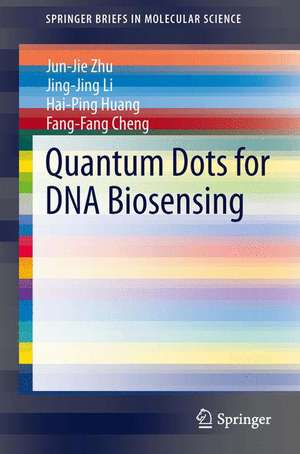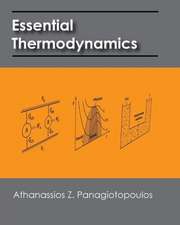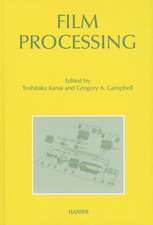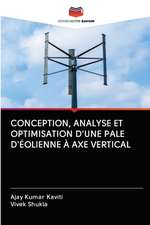Quantum Dots for DNA Biosensing: SpringerBriefs in Molecular Science
Autor Jun-Jie Zhu, Jing-Jing Li, Hai-Ping Huang, Fang-Fang Chengen Limba Engleză Paperback – 20 dec 2013
Din seria SpringerBriefs in Molecular Science
-
 Preț: 411.46 lei
Preț: 411.46 lei -
 Preț: 379.09 lei
Preț: 379.09 lei -
 Preț: 356.49 lei
Preț: 356.49 lei -
 Preț: 441.25 lei
Preț: 441.25 lei -
 Preț: 389.70 lei
Preț: 389.70 lei -
 Preț: 376.22 lei
Preț: 376.22 lei -
 Preț: 348.77 lei
Preț: 348.77 lei -
 Preț: 345.14 lei
Preț: 345.14 lei -
 Preț: 347.69 lei
Preț: 347.69 lei -
 Preț: 346.70 lei
Preț: 346.70 lei -
 Preț: 376.43 lei
Preț: 376.43 lei -
 Preț: 342.14 lei
Preț: 342.14 lei -
 Preț: 375.23 lei
Preț: 375.23 lei -
 Preț: 375.23 lei
Preț: 375.23 lei -
 Preț: 379.09 lei
Preț: 379.09 lei -
 Preț: 376.59 lei
Preț: 376.59 lei - 15%
 Preț: 461.73 lei
Preț: 461.73 lei -
 Preț: 378.12 lei
Preț: 378.12 lei -
 Preț: 376.59 lei
Preț: 376.59 lei -
 Preț: 376.59 lei
Preț: 376.59 lei -
 Preț: 375.23 lei
Preț: 375.23 lei -
 Preț: 351.18 lei
Preț: 351.18 lei -
 Preț: 377.73 lei
Preț: 377.73 lei -
 Preț: 372.73 lei
Preț: 372.73 lei -
 Preț: 378.54 lei
Preț: 378.54 lei -
 Preț: 376.96 lei
Preț: 376.96 lei -
 Preț: 377.35 lei
Preț: 377.35 lei -
 Preț: 378.12 lei
Preț: 378.12 lei -
 Preț: 376.04 lei
Preț: 376.04 lei -
 Preț: 346.59 lei
Preț: 346.59 lei -
 Preț: 375.45 lei
Preț: 375.45 lei -
 Preț: 377.73 lei
Preț: 377.73 lei -
 Preț: 381.00 lei
Preț: 381.00 lei -
 Preț: 377.18 lei
Preț: 377.18 lei -
 Preț: 376.96 lei
Preț: 376.96 lei -
 Preț: 380.07 lei
Preț: 380.07 lei -
 Preț: 376.22 lei
Preț: 376.22 lei -
 Preț: 343.72 lei
Preț: 343.72 lei -
 Preț: 376.22 lei
Preț: 376.22 lei -
 Preț: 377.35 lei
Preț: 377.35 lei -
 Preț: 343.72 lei
Preț: 343.72 lei -
 Preț: 375.07 lei
Preț: 375.07 lei -
 Preț: 374.85 lei
Preț: 374.85 lei - 15%
 Preț: 464.97 lei
Preț: 464.97 lei -
 Preț: 376.43 lei
Preț: 376.43 lei -
 Preț: 341.75 lei
Preț: 341.75 lei -
 Preț: 374.30 lei
Preț: 374.30 lei -
 Preț: 375.23 lei
Preț: 375.23 lei -
 Preț: 377.57 lei
Preț: 377.57 lei
Preț: 376.22 lei
Nou
Puncte Express: 564
Preț estimativ în valută:
72.01€ • 78.25$ • 60.53£
72.01€ • 78.25$ • 60.53£
Carte tipărită la comandă
Livrare economică 21 aprilie-05 mai
Preluare comenzi: 021 569.72.76
Specificații
ISBN-13: 9783642449093
ISBN-10: 3642449093
Pagini: 100
Ilustrații: VIII, 91 p. 41 illus., 22 illus. in color.
Dimensiuni: 155 x 235 x 5 mm
Greutate: 0.14 kg
Ediția:2013
Editura: Springer Berlin, Heidelberg
Colecția Springer
Seria SpringerBriefs in Molecular Science
Locul publicării:Berlin, Heidelberg, Germany
ISBN-10: 3642449093
Pagini: 100
Ilustrații: VIII, 91 p. 41 illus., 22 illus. in color.
Dimensiuni: 155 x 235 x 5 mm
Greutate: 0.14 kg
Ediția:2013
Editura: Springer Berlin, Heidelberg
Colecția Springer
Seria SpringerBriefs in Molecular Science
Locul publicării:Berlin, Heidelberg, Germany
Public țintă
ResearchCuprins
Introduction.- Quantum Dots.- QDs-Fluorescence Based Biosensing.- QDs-ECL based Biosensing.- QDs-Electrochemical and Photoelectrochemical Biosensing.
Notă biografică
Jun-Jie Zhu received his B.S. degree in Chemistry from Nanjing University in 1984 and his Ph.D. degree from the same university in 1993. From 1998 to 1999, he was a postdoctoral research fellow at Bar Ilan University, Israel. He is currently serving as a full professor at Nanjing University, where he was honored by National Natural Science Funds for Distinguished Young Scholars of China in 2003. Professor Zhu mainly works in nano-bioanalytical chemistry, including the synthesis and characterization of functionalized nanomaterials, bioelectrochemistry and nanoelectrochemistry, optical analysis of nanomaterials, regulation and manipulation on microfluidic chips using nanomaterials and the bio-application of nanomaterials.
Jing-Jing Li obtained her B. Sc. in 2005 and M. Sc. in 2008 from Suzhou University. In 2012, she obtained her Ph. D. from Nanjing University under the supervision of Prof. Jun-Jie Zhu and Jian-Rong Zhang. She is currently a research associate at Xuzhou Medical College. Her research interest during her doctoral studies mainly focused on aptamer biosensors and novel functional fluorescent molecular probes for cell imaging.
Hai-Ping Huang received his B. Sc. in 2003 from Southwest University and his M. Sc. in 2006 from Changchun Institute of Applied Chemistry, Chinese Academy of Sciences. In 2009 he completed his Ph. D. at Nanjing University under the supervision of Prof. Jun-Jie Zhu. Currently he is an associate professor at Jiangxi University of Science and Technology. His general research interests include the synthesis, characterization and bio-related applications of novel nanomaterials.
Fang-Fang Cheng obtained her Bachelor degree in 2008 from Yangzhou University. She is currently a senior PhD candidate at Nanjing University, working under the supervision of Prof. Jun-Jie Zhu. Her research interest is mainly in the development of drug delivery systems as well as the optical and electrochemical detection of cancer markers.
Jing-Jing Li obtained her B. Sc. in 2005 and M. Sc. in 2008 from Suzhou University. In 2012, she obtained her Ph. D. from Nanjing University under the supervision of Prof. Jun-Jie Zhu and Jian-Rong Zhang. She is currently a research associate at Xuzhou Medical College. Her research interest during her doctoral studies mainly focused on aptamer biosensors and novel functional fluorescent molecular probes for cell imaging.
Hai-Ping Huang received his B. Sc. in 2003 from Southwest University and his M. Sc. in 2006 from Changchun Institute of Applied Chemistry, Chinese Academy of Sciences. In 2009 he completed his Ph. D. at Nanjing University under the supervision of Prof. Jun-Jie Zhu. Currently he is an associate professor at Jiangxi University of Science and Technology. His general research interests include the synthesis, characterization and bio-related applications of novel nanomaterials.
Fang-Fang Cheng obtained her Bachelor degree in 2008 from Yangzhou University. She is currently a senior PhD candidate at Nanjing University, working under the supervision of Prof. Jun-Jie Zhu. Her research interest is mainly in the development of drug delivery systems as well as the optical and electrochemical detection of cancer markers.
Textul de pe ultima copertă
This book provides a broad introduction to all major aspects of quantum dot properties including fluorescence, electrochemical, photochemical and electroluminescence. Such properties have been produced for applications in biosensing, cell tracking, in vivo animal imaging and so on. It focuses on their special applications in DNA biosensing and provides readers with detailed information on the preparation and functionalization of quantum dots and the fabrication of DNA biosensors, using examples to show how these properties can be used in DNA biosensor design and the advantages of quantum dots in DNA biosensing. Further, new emerging quantum dots such as metal nanoclusters and graphene dots and their applications in DNA biosensing have also been included.
Caracteristici
Provides extensive information on the preparation and functionalization of quantum dots as well as the fabrication of DNA biosensors Includes the newly emerging quantum dots and their applications Comprehensively shows the advantages of quantum dots in DNA biosensing using various examples Includes supplementary material: sn.pub/extras















